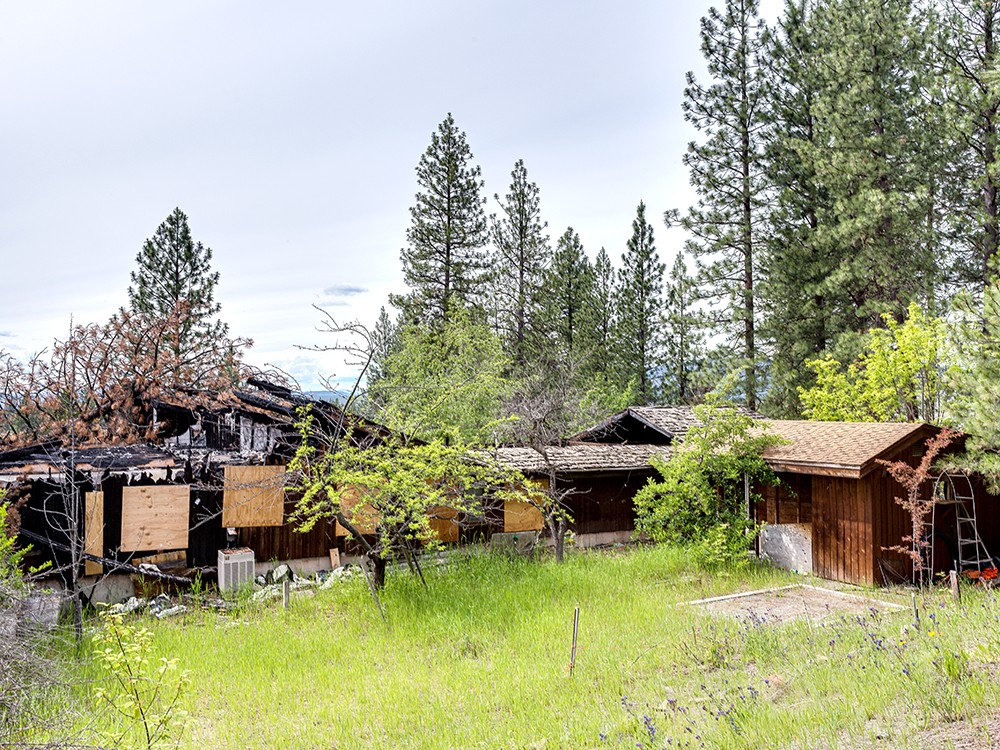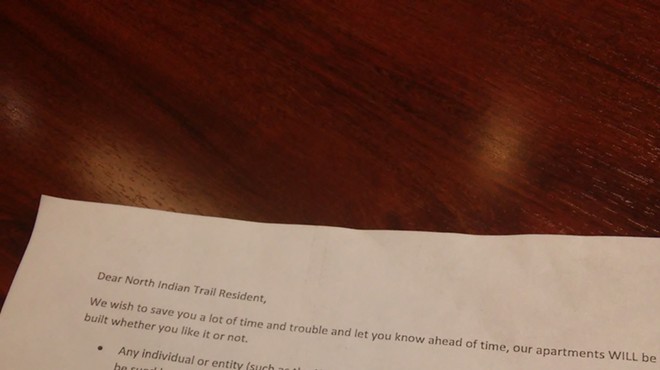When Barbara Plewman looks up, she sees two matches waiting to be struck.
Across the street and up a hill from her beige ranch-style house in Spokane’s North Indian Trail neighborhood are two dead trees, their brown-and-orange tops hovering over a house that once was. Now charred from a fire last fall, the house’s insides are strewn across the driveway, its roof crushed under a snapped-off pine tree.
Standing in slippers in her driveway, with gray hair and wire-rim glasses, Plewman calls it a “tinder box.”
“What’s it going to take? A little lightning?” she says. “This is a good neighborhood. Why should we put up with something so trashy?”
The house, abandoned by its owner, is one of six properties on the city’s to-demolish list, but the department in charge of tearing the buildings down doesn’t have the money to do its work, says Heather Trautman, director of the Office of Neighborhood Services and Code Enforcement.
“The city has been requiring departments to cut back on their expenditures,” Trautman says. “Many areas of my budget I’ve had to reduce … so I don’t have money to do very much.”
So for the first time since “well before 2006,” Trautman says, her department is asking the council to spend $150,000 from the city’s reserves to pay for the demolitions through an emergency budget ordinance. Council President Ben Stuckart says the measure will likely pass a full council vote on Monday.
Damaged or dilapidated buildings end up on the city’s demolition list after a process of complaints, notifications and hearings. Property owners or responsible banks have hearings to challenge demolition decisions, and when a building is ordered demolished, they have the first chance to do the teardown. But if they take no action, the work falls to the city.
The city recoups its expenses by putting a lien on the property, meaning if the demolition costs aren’t repaid, the property goes to a county auction and profits from the sale repay the city. Trautman says that process typically takes about three years, so the department still needs upfront cash to pay for the demolitions.
Three of the properties on the list were ordered to be demolished last year, but were put off because the department couldn’t afford the work. The other three have come in the first half of this year, nearly reaching the department’s four-per-year average.
This stopgap measure would pay for the backlog of demolitions, but with negotiations over next year’s budget not yet underway, it’s unclear if the city will find a more permanent solution. Meanwhile, two more properties are in waiting as the owner has 30 days to tear down the buildings before the city takes over, and the department has identified another seven that could see demolition orders this year.
Trautman is hopeful her department will find ways to fund its work, even in lean times, but Stuckart sees the shortfall as a rallying point against budget cuts.
“When you cut too far, you have to dip into reserves to get work done to run the city,” he says. “This is just another example of why these extreme cuts in budgets aren’t necessarily the best long-term strategy.”




















